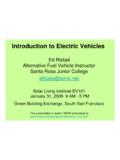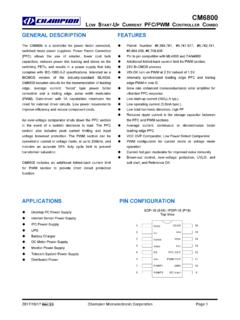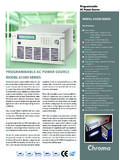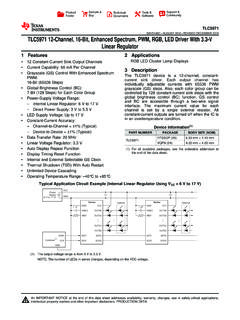Transcription of Electric Vehicle Drive Systems - NBEAA Home
1 North Bay Electric Auto AssociationSummer 2009 Technical SeriesElectric Vehicle Drive June 13, 2009 Corrected June 15, 2009 This presentation is posted at: Summer Technical SeriesTODAY>>1. EV Drive Systems2. EV Batteries and Management Systems 3. EV Charging Systems 4. EV Donor Vehicles AgendaWhat is an EV Drive system ?EV Drive system History EV Drive system RequirementsTypes of EV Drive SystemsEV Drive system CoolingEV Drive system ManagementEV Drive system ComparisonFuture EV Drive SystemsEV Drive system Testimonials, Show and Tells and Test DrivesWhat is an EV Drive system ? MotorFly-wheel and ClutchTrans-missionDrive Shaft Differ-entialMotor AdapterAll or a subset of the components between the batteries and the wheels shown above.
2 Motor controllerFrom BatteryU JointU JointCV JointCV JointHalf Shaft CV JointCV JointHalf Shaft To WheelTo WheelFrom DriverWhat is an EV Drive system ? Demonstration of Electric motor principles: Two permanent magnets attracting and repelling each other An electromagnet attracting and repelling a permanent magnet with a DC source, reversed with polarity A small brushed permanent magnet DC motor, speed increased with varying voltage through variable resistor, and reversed with polarity EV Drive system HistoryUS1990sFirst digital configuration PWM controllersUS1980sFirst IGBT PWM controllersUS1950sFirst high efficiency small air gap motorsUS1960sFirst SCR controllersUS2000sFirst digital control PWM controllers1970s191418881873183918321821 USUSUSB elgiumScotlandEnglandEnglandThomas Edison and Henry FordNikolaTeslaZenobeGrammeRobert AndersonWilliam SturgeonMichael FaradayFirst MOSFET PWM controllersFirst mass produced Electric Vehicle , with variable resistor DC motor controlFirst AC motorFirst DC motor that was commercially successful First Electric carriage.
3 4 MPH with non-rechargeable batteriesFirst DC motor that could turn machineryFirst Electric motor, for demonstration onlyEV Drive system RequirementsSafeHigh PowerHigh EfficiencyDurableEV Drive system Requirements: SafeExamples of EV Drive system safety issues:Short Circuitcommon DC motor controller failure mode, exacerbated byhigh currents and hence high heatprobability reduced with improved efficiencyresponse enhanced with a clutch, circuit breaker andautomatic contactor controllerLow powersome more efficient or lower cost setups with low powercould expose Vehicle to oncoming trafficoverheating undersized or poorly controlled Systems couldinduce thermal cutback that can exacerbate thisEV Drive system Requirements.
4 High PowerPower = Watts = Volts x AmpsPower out = power in x efficiency of portion of system being evaluatedat the output shaft or at the brake pads1 Horsepower = 746 WattsMotor controller efficiency = >90%Motor efficiency = 85-95%Rest of Drive train efficiency = 85-90%Overall efficiency 65-75%25-35% lost due to heatEV Drive system Requirements: High PowerExampleAccelerating or driving up a short steep hillPeak Motor Shaft Power = ~50 HP or ~37,000 WPeak Motor Current~500A for 144V nominal pack with DC Drive ~200A RMS for 288V nominal pack with AC Drive Driving steady state on flat ground at high speedContinuous Motor Shaft Power = ~20 HP or ~15,000 WContinuous Motor Current~200A for 144V nominal pack with DC Drive ~75A RMS for 288V nominal pack with AC driveRegenerative BrakingDepends on battery typeExample.
5 3C max charge Thunder Sky LFP series LiFePO4180A for 60 Ah cells270A for 90 Ah cellsMotorFly-wheel and ClutchTrans-missionDrive Shaft Differ-entialMotor AdapterMotor controllerU JointU JointCV JointCV JointHalf Shaft CV JointCV JointHalf Shaft Switching Transistor, freewheel diode heatCopper, bearing heatEV Drive system Requirements: High EfficiencyPower losses due to heat cause power and range heatBearing heatBearing heatBearing heat x5 The more current, the more load, and hence the more heat is Drive system Requirements: DurableWide range of driving requirements combined with downwards pressure on size and weight for performance and cost reasons can put excess stress on Drive system componentsHarsh automotive environment much worse than indoor environment:temperature: -40C to 50 Chumidity: 5% to condensingshock: potholesvibration: gravel roadsMake sure to use a motor for and EV that was intended for on-road of EV Drive Systems : Which Type is Best?
6 AC vs. DCAC is more efficient, less maintenance and more robustDC is less expensive, but mainly due to higher volumefork lift industry trend is moving from DC to AClate model OEM EVshave mostly been AC; conversions mostly DC Transmission or fixed gearTransmission is more efficientFixed gear is lighter and less complex Clutch or no clutchClutch is more efficient No clutch is lighter and less complexThe debate rages on, but the highest performance is AC with transmission and of EV Drive Systems : Motor TerminologyRotor: rotating part of motorStator: stationary part of motorField: produces magnetic field to be acted upon by armature;can be electromagnet or permanent magnetArmature: carries current normal to field togenerate torqueRotor or stator can be either field or of EV Drive Systems .
7 Motor ComparisonNoYesNoYesYesYesbrushesOpposin g magnetic field induced via eddy currents caused by slip between stator and rotor in copper or aluminum squirrel cage frameArmature windings, PWM dvia rotor position sensor AC InductionField windings, DC energized through brushes and slip ringsArmature windings, PWM dvia rotor position sensor AC SynchronousField permanent magnetArmature windings, PWM dvia rotor position sensor DC Brushless Permanent MagnetArmature windings, commutated through brushesField permanent magnetDC Brushed Permanent MagnetArmature windings, commutated through brushes, separately excited from fieldField windingsDC ShuntArmature windings, commutated through brushes and split rings, in series with fieldField windingsDC SeriesRotorStatortypeTypes of EV Drive SystemsSiemens2 Siemens2 SynchronousACAlltraxPerm PMGEt-R, RTBrushed Permanent MagnetAC PropulsionAzure DynamicsBrusaCurtisMESS iemens2 MarsToyota RAV4 EV3D&DAdvanced DCKostov2 NetgainExample MotorsExample ControllersTypeCategoryInductionBrushles s Permanent MagnetShuntSeriesAC PropulsionAzure DynamicsBrusaCurtisMESS iemens2 SevconToyota RAV4 EV3 AlltraxSevconAlltraxAuburn3 Caf Electric1 CurtisRaptor1 DCNotes.
8 1 Requires special order, 2are no longer readily available in the US, 3are of EV Drive Systems : DrivelinesHeck NoNoYesFit for flywheel and clutch?InvolutedSplineSplinedSmooth KeyedPictureShaft TypeTypes of EV Drive Systems : Motor Control via Pulse Width Modulation100% duty cycle75%50%25%0%Types of EV Drive Systems : Switch Mode Power Supply Buck RegulatorFrom batteriesMotor Armature (and field for DC series; separate circuit for DC shunt and AC synchronous)Power switching transistors (MOSFETsor IGBTs)From PWM control circuitFreewheel diodesFilter capacitorsWhen power is applied to input, capacitors are charged up. Whentransistors are switched on, current flows from the batteries and capacitors to the motor.
9 When the transistors are off, the capacitors are recharged by the batteries while current flows from the motor to the freewheel diodes while the motor s magnetic field collapses to keep from increasing the voltage across the transistor to the point of failure. Types of EV Drive Systems : 3 Phase AC Configurations deltawyeCoil voltage = line voltageRPM varies with voltageUsed at lower voltages to maximize speedCoil current = line currentTorque varies with currentUsed at higher voltages to maximize torqueAABCBCT ypes of EV Drive Systems : PWM control circuit typesAnalogDigital configurationDigital controlTypes of EV Drive Systems : Cooling SystemsTakes up a single large fixed volumeSealed, external fan on heat sinkRequires small cooling systemRequires small cooling systemSealed, liquidTakes up more volume; Needs debris and splash shield; low slung motor can not be submergedNeeds debris and splash shield.
10 Low slung motor can not be submergedCenter may overheatMotorNeeds large area heat sink; can be flat plateSealed, no fanExternal fan, openMay corrode due to humidity, or overheat due to dust accumulationInternal fan, openMotor ControllerTypeTypes of EV Drive Systems : Management SystemsVoltage (speed) or current (torque) regulation vs. pedal (potboxor hall effect) inputMotor current limitingBattery current limitingLow pack voltage cutoffLow cell voltage cutoffMotor controller thermal cutbackMotor thermal cutbackBattery thermal cutbackEV Drive system Comparison+++~~~Regen~~~~~+Torque+++~~~E fficiency+AC Induction+AC Synchronous+DC Brushless PM~DC Brushed PM~DC Shunt~DC SeriesSafetyTypeEV Drive system Comparison$12,000 $6,500 $4,000 $3,500 $3,500 $3,000 $3,000 system Price 121 117 190 190 170 170 170 Motor and Controller Weight, lbs torque torque torque ?







